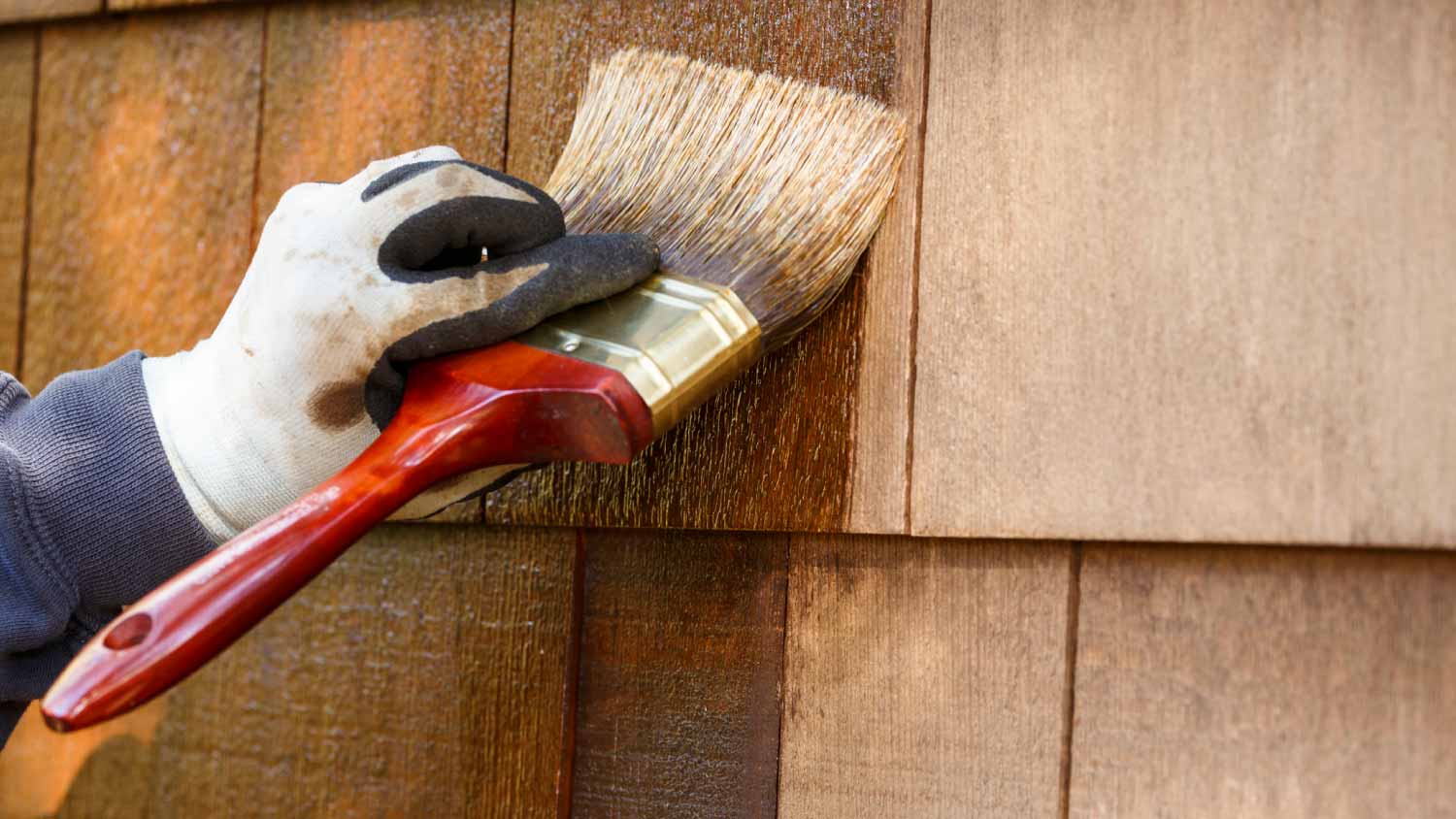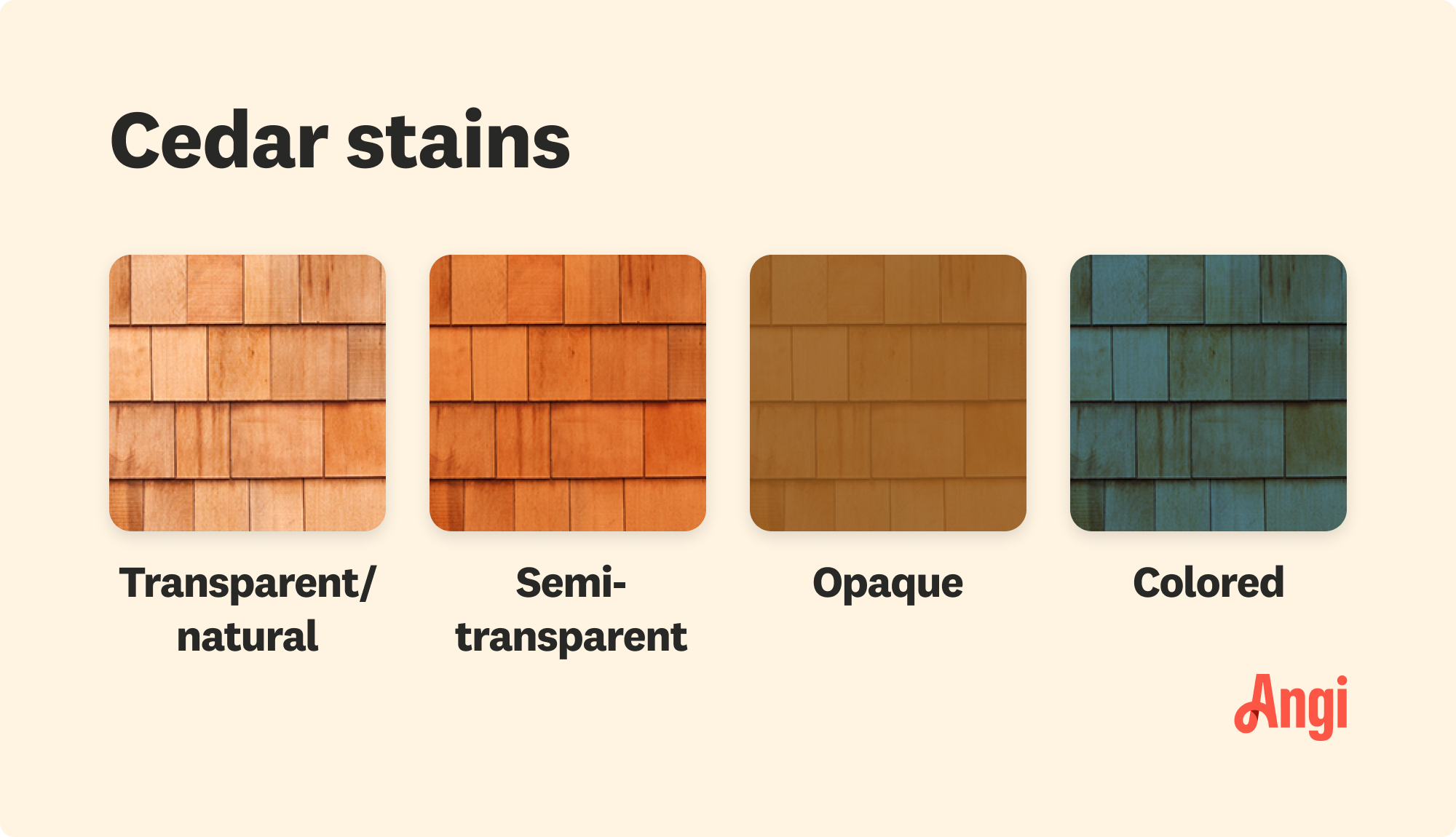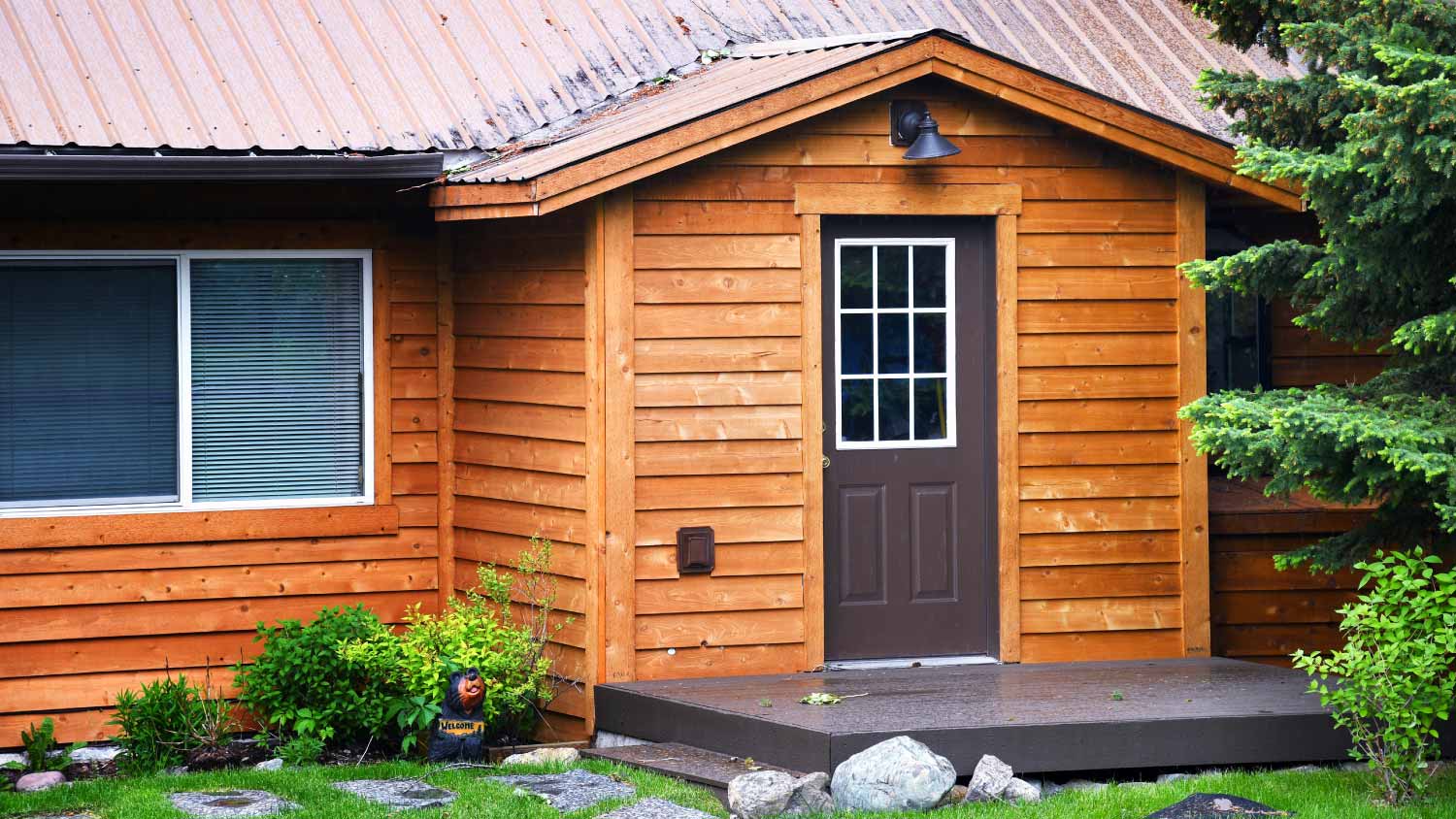
Painting your house increases curb appeal and durability, but you may need to rent a lift for the project. Here’s a breakdown of cost by lift type and height.
Staining cedar siding costs on average $3,300, but can increase depending on the size of your project and type of stain used.


The cost to stain cedar siding is $3,300 on average, but can run between $400 and $11,000 depending on the size of your project and the type of stain used.
Cedar siding can add natural beauty to your home, offering a timeless blending of the siding with nature. Staining cedar will make it appear more vibrant and alive and can also increase the wood’s natural lifespan.

Assuming you have already installed the cedar siding, the cost to stain cedar siding depends mainly on the square footage of the area and local labor costs.
You should expect to pay between $2 and $ 5 per square foot for the materials and labor. Consider that larger projects have the benefit of scale, which means you can use larger containers of staining material, and the tools you use will become a small aspect of the overall cost.
| Home Size (Square Feet) | Estimated Coverage (Square Feet) | Average Cost |
|---|---|---|
| 1,000 | 1,300 | $2,600–$6,500 |
| 1,500 | 1,600 | $3,200–$8,000 |
| 2,000 | 1,900 | 3,800–$9,500 |
| 2,500 | 2,100 | $4,200–$10,500 |
| 3,000 | 2,300 | $4,600–$11,500 |
| 3,500 | 2,500 | $5,000–$12,500 |
Labor is by far the most expensive part of staining cedar siding. The good news is that the work isn’t particularly specialized, so expect to pay between $25 and $65 an hour when you hire a painting pro. The project may need significant prep work, so discuss with a painter if that’s something you can do yourself to save on the project’s cost. Local exterior painting professionals can apply the stain, wipe away excess, and repeat as necessary. While sealant isn’t required, many painters seal everything they stain because it greatly enhances the cedar’s weather resistance, natural color, and lifetime.
Cedar stains are all similarly priced, so the real choice you need to make is whether you want to use natural, semitransparent, or opaque stains. Many choose to side their houses with cedar to reflect the nature surrounding them, which is why natural and semi-transparent stains are more popular as they allow the natural wood grain to shine through.

You can save on the cost of labor by staining your cedar siding on your own because you’ll just have to pay for the materials. For almost all staining jobs, you’ll need the items listed below. You can use many of them for the majority of the project regardless of size, which just means the more square footage you stain, the less expensive the materials are.
| Tool or Material | Cost |
|---|---|
| Container of cedar stain | $49 |
| Stain brush | $18 |
| Rags | $26 |
| Goggles or safety glasses | $9 |
| Gloves | $11 |
Before you decide to stain your entire house, buy a cedar plank and practice on it first. This gives you a chance to test your stain and determine how many coats you want to add. It also gives you an idea of whether you are up for the physical demands of the project. Remember, you can always hire a painting pro to tackle this job for you. You’ll pay a bit more, but you’ll save yourself the time and energy of doing the job yourself and you may be happier with the finished product.

Saving money when staining cedar siding comes down to the size of the work being done and whether or not you can do it yourself. You may be able to shave small expenses, but nothing will make as big of a difference as DIYing the job or working alongside a pro. Some ways to save money are:
Buy the stain in bulk.
Do the work yourself.
Get multiple quotes.
Hire in the off-season.
Prepare the surface yourself.
Wait to buy stain until it’s on sale.
Use leftover stains from previous projects.
Home is the most important place on earth, which is why Angi has helped more than 150 million homeowners transform their houses into homes they adore. To help homeowners with their next project, Angi provides readers with the most accurate cost data and upholds strict editorial standards. We extensively research project costs to develop the pricing data you see, so you can make the best decisions for you and your home. We rely on reputable sources, including the U.S. Bureau of Labor Statistics, academic journals, market studies, and interviews with industry experts—all to ensure our prices reflect real-world projects.
Want to help us improve our cost data? Send us a recent project quote to [email protected]. Quotes and personal information will not be shared publicly.
From average costs to expert advice, get all the answers you need to get your job done.

Painting your house increases curb appeal and durability, but you may need to rent a lift for the project. Here’s a breakdown of cost by lift type and height.

The cost to paint aluminum siding depends on several factors, including type of paint and labor cost. What are the pros and cons of DIY or hiring a painter?

The cost to paint a house's exterior depends on its size, siding type, and height. The finish and the home's exterior condition also play a role.

You choose it to withstand the elements, but can you paint a vinyl fence? The answer is yes, but it might not be the best when your fence shows wear and tear.

Painting a brick house is a permanent renovation project that requires weighing the pros and cons. Keep reading to find out if you should paint your brick home.

Discover how to whitewash brick to enjoy its timeless charm and naturally protective properties.